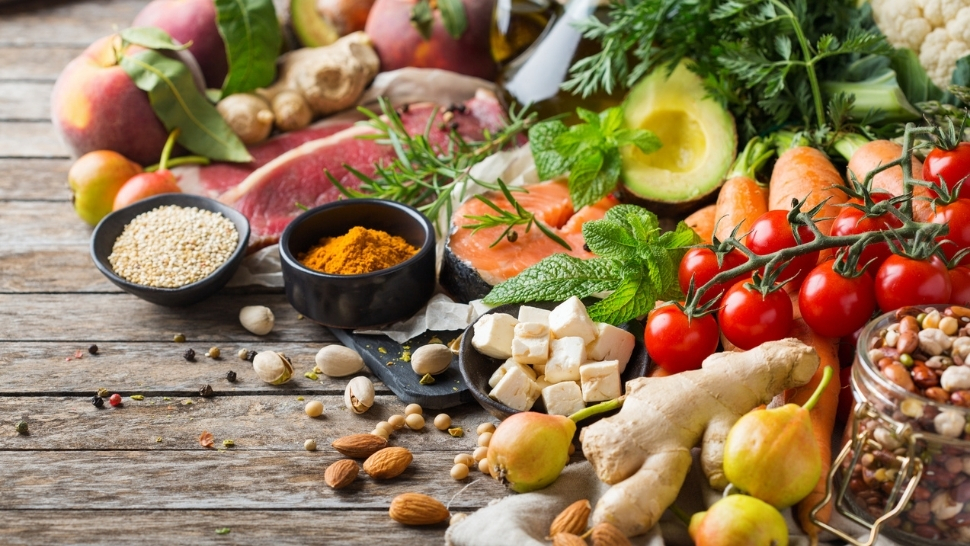
The word “flexitarian” is a hybrid of “flexible” and “vegetarian.” It came into popular usage in 2010 with the publication of Dawn Jackson Blatner’s best selling book “The Flexitarian Diet” and has since become synonymous with a flexible, semi-vegetarian eating pattern.
While the pandemic hasn’t turned us into health nuts, according to a Nielsen Homescan survey, one-third of Americans are trying to eat more nuts (well, all plant-based food really)! People are looking for alternatives to meat (and not necessarily “fake meat”) and trying to eat a diet rich in plants. Yet this survey showed that few people are totally abstaining from eating meat, pointing to a growing number falling into a flexitarian eating pattern. People are still looking for craveability and comfort, and adding a small or moderate amount of cheese or other animal-based foods on occasion, with an abundance of produce, whole grains, nuts and seeds, seems to be the sweet spot.
If you’re considering becoming a vegetarian but feel hesitant because you know you’ll (sometimes) miss the “meat,” the flexitarian diet may be a great option for you.
What is the Flexitarian Diet?
Translated to a diet, it’s a low-rules, non-judgy approach to eating that uses a vegetarian (or vegan) diet as the base of all meals, but allows the addition of meat, fish, and/or other animal foods to flex plant-based meals when desired. While there is no limit on the number of times animal protein can be added to meals, daily or weekly, flexitarians would say they are making a conscious choice to reduce their meat intake and embrace more plant-based meals.
What can I eat?
While there are no strict rules, the flexitarian diet emphasizes minimally processed, quality foods from sustainable sources. The diet’s foundation lies in a vegetarian diet, which includes vegetables, fruits, legumes, whole grains, nuts, seeds, dairy, and eggs (though some people may also reduce intake of these). People following a flexitarian diet also occasionally eat red meats, poultry, fish, and seafood, usually from sustainable and humane sources.
What’s off limits?
No food is off limits, but (most) flexitarians also lean toward healthy eating habits, so minimize processed meats (bacon, salami, etc.), refined grains (white rice, white bread, cookies, cakes, etc.), added sugars, fast foods, and processed snack foods. You choose how animal food fits in your personal plan.
Is there anything else to consider?
A flexitarian lifestyle is not only associated with personal health benefits, eating more plant-based meals has a positive impact on the environment. Eat a variety of whole foods to ensure you are replacing any vitamins and minerals you may now be omitting — for example, reducing fish consumption means you should look for those omega-3’s in alternative sources, such as nuts and seeds.
There’s no wrong way to get to your end goal. You can begin as a vegetarian and add meat when a craving hits, start in the middle and go vegetarian two or three days per week, or set small goals for yourself such as choosing vegetarian breakfasts or enjoying a few meatless meals per week and increasing the number as you feel comfortable. Everyone’s behavioral change methods are different, so as the name states, use the flexibility of this “diet” to do what works for you and make it your own!
If you want to know the science…
A meta-analysis (summary of evidence-based studies on a particular topic) including epidemiological students and randomized controlled clinical trials (gold standard in nutrition research) on how the flexitarian diet impacts public health found that strict vegetarians had the lowest average Body Mass Index, followed by flexitarian, and then omnivores (meat eaters) with the highest BMI, implying that a flexitarian lifestyle could help omnivores with weight loss. The same pattern was found in relation to metabolic health, including prevalence of diabetes and high blood pressure.
As for diet quality, the same meta-analysis observed that overweight and obese adults who consumed vegan or vegetarian diets had an improved macronutrient profile and lower inflammatory potential in their diet. Additionally, observational studies showed that people consuming plant-based diets had a lower calorie intake and higher fiber intake compared to omnivores.
Disclaimer: The information in this article is not intended to be medical advice. If you are considering starting a new diet, work with your healthcare provider to find the best approach for you.
Read about other popular diets in this series: